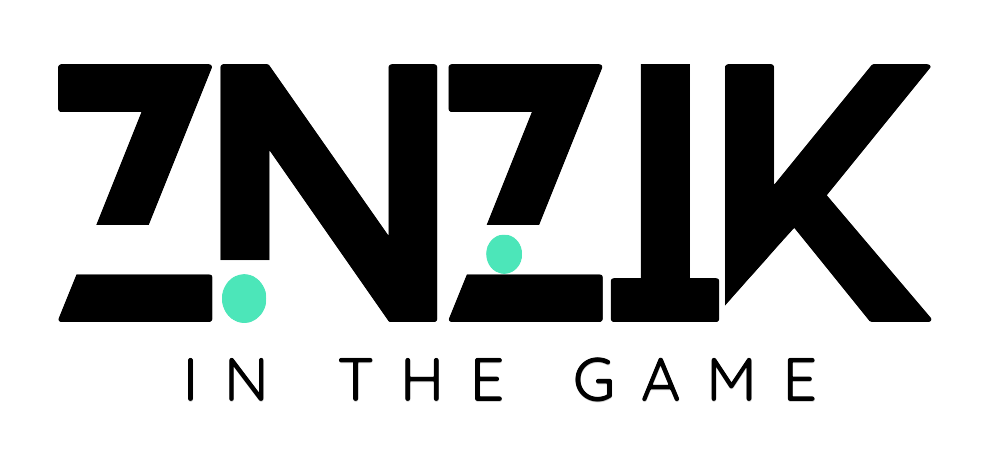7. Hashtags
UEFA Champions League: Complete Analysis of Barcelona vs Paris Saint-Germain (Matchday 2)
The stage is set for one of European football’s most captivating rivalries as FC Barcelona hosts Paris Saint-Germain at the Estadi Olímpic Lluís Companys in what promises to be a tactical chess match between two of the continent’s elite clubs. This Champions League group stage encounter carries significant weight beyond the three points at stake, as both teams seek to establish early momentum in the competition while managing substantial injury crises that have depleted their respective squads.
The historical context adds layers of intrigue to this meeting, with Barcelona seeking revenge for last season’s painful quarterfinal elimination at the hands of the Parisians, who went on to claim their first-ever Champions League title. Both clubs arrive with impressive recent form but facing unprecedented personnel challenges that will test the tactical acumen of managers Hansi Flick and Luis Enrique as they navigate this crucial European encounter.
1. Key Match Information
1.1. Match Details
The highly anticipated Champions League clash takes place on Wednesday, October 1, 2025, with kickoff scheduled for 19:00 UTC at the iconic Estadi Olímpic Lluís Companys in Barcelona, Spain. This temporary home venue for Barcelona during the renovation of Camp Nou has witnessed numerous memorable European nights and provides an atmospheric setting for this Matchday 2 encounter in the UEFA Champions League group stage.
The timing of this fixture places it early in the Champions League campaign, making it a crucial opportunity for both teams to establish momentum and positioning in the new league phase format. With both clubs expected to advance from the group stage, this match will significantly influence seeding positions and potential knockout round opponents, making the result important beyond the immediate three points available.
The Estadi Olímpic Lluís Companys, with its capacity of approximately 54,000 spectators, will provide an electric atmosphere as Barcelona’s passionate supporters create the kind of intimidating environment that has historically given the Catalan club significant home advantage in European competition. The stadium’s configuration and pitch dimensions favor Barcelona’s possession-based playing style while the vocal support can influence referee decisions and unsettle visiting teams.
1.2. Historical Context
Barcelona faces the reigning Champions League champions in a fixture that carries psychological weight beyond standard group stage encounters. PSG’s transformation from perennial European underachievers to continental champions has shifted the power dynamic between these clubs, with the French side now arriving in Barcelona with the confidence and credentials of Europe’s best team.
The most recent encounter between these sides occurred in April 2024 during the Champions League quarterfinals, where PSG eliminated Barcelona with a 6-4 aggregate victory that left the Catalan club devastated and questioning their European credentials. That elimination represented another painful chapter in Barcelona’s recent Champions League struggles while marking PSG’s emergence as a genuine European powerhouse capable of eliminating elite opposition.
The quarterfinal defeat still resonates within Barcelona’s dressing room, providing additional motivation beyond the standard importance of Champions League points. Players who experienced that elimination understand the tactical and psychological approaches that PSG employed successfully, potentially allowing Barcelona to develop counter-strategies that address previous weaknesses exploited by Luis Enrique’s tactical system.
2. Team News and Current Form
2.1. FC Barcelona’s Recent Form
Barcelona opened their Champions League campaign with a hard-fought 2-1 victory against Newcastle United, demonstrating resilience and character to secure three crucial points despite facing a determined English opponent. This victory provided the perfect start to their European campaign while building confidence ahead of this more challenging encounter against the defending champions.
The Catalan giants have compiled an impressive streak of five consecutive victories across all competitions, showcasing the attacking fluidity and defensive organization that has characterized Hansi Flick’s transformative impact on the squad. Under Flick’s guidance, Barcelona has rediscovered the dynamic, high-pressing style that defined their golden era while incorporating modern tactical innovations that make them unpredictable and dangerous.
This winning run includes victories against top domestic opponents and has elevated team confidence to levels not seen since their last Champions League triumph. The attacking synergy between Lewandowski, Yamal, and the creative midfielders has produced spectacular football that has thrilled supporters while delivering consistent results. However, the mounting injury list threatens to disrupt this momentum at a crucial moment.
2.2. Paris Saint-Germain’s Recent Form
PSG inaugurated their title defense with a commanding 4-0 demolition of Atalanta in their Champions League opener, sending an emphatic statement about their intentions to retain the European crown. The comprehensive victory showcased PSG’s tactical sophistication and attacking diversity, with multiple players contributing goals in a performance that demonstrated their depth and quality across all positions.
The French champions currently sit atop Ligue 1 alongside Lyon, maintaining the domestic dominance that has become their hallmark while managing squad rotation necessary for success across multiple competitions. Luis Enrique’s tactical flexibility has allowed PSG to dominate domestically while preparing specifically for high-stakes European encounters that require different tactical approaches.
PSG’s form reflects the confidence and tactical clarity that comes with successful teams who understand their strengths and execute game plans with precision. However, their significant injury crisis presents challenges that even their considerable squad depth may struggle to overcome, particularly against an opponent of Barcelona’s quality playing in front of their passionate home support.
2.3. Head-to-Head Record
The historical record between these European giants shows 13 total matches, with Barcelona claiming 5 victories, PSG winning 4 encounters, and 4 matches ending in draws. This relatively balanced record reflects the competitive nature of this fixture, where tactical nuances and individual moments of brilliance often determine outcomes rather than overwhelming superiority by either side.
The head-to-head statistics demonstrate that neither team has established consistent dominance over the other, with results often influenced by form, injuries, and tactical adjustments specific to each encounter. Recent meetings have favored PSG, who have developed tactical answers to Barcelona’s traditional possession-based approach while exploiting defensive vulnerabilities that have plagued the Catalan club in recent seasons.
This balanced historical record suggests that Wednesday’s encounter could go either way, with the match likely to be decided by which team better manages their injury crisis and executes their tactical game plan more effectively. The psychological element of Barcelona seeking revenge for last season’s elimination adds another dimension to a fixture that already carries significant competitive importance.
3. Injuries and Unavailability (Team News)
3.1. Barcelona’s Crucial Absences
Barcelona will be without goalkeepers Marc-André ter Stegen (back injury) and Joan Garcia (knee injury), along with key outfield players Raphinha, Gavi, and Fermin Lopez. These absences represent significant losses across multiple positions, forcing Hansi Flick to make substantial adjustments to his preferred lineup and tactical approach.
The absence of ter Stegen, Barcelona’s undisputed first-choice goalkeeper and defensive leader, cannot be overstated. Wojciech Szczesny will deputize for ter Stegen in the starting XI, bringing vast experience but lacking the specific understanding of Barcelona’s defensive system that ter Stegen has developed over years with the club. The Polish goalkeeper’s adaptation to Barcelona’s high defensive line and sweeper-keeper responsibilities will be crucial to defensive stability.
Despite the string of injuries, there’s positive news for Barcelona as Lamine Yamal has returned to action. The teenage sensation’s availability provides a massive boost to Barcelona’s attacking capabilities, as his direct dribbling, creative passing, and goal threat from wide positions make him indispensable to the team’s offensive structure. Yamal’s ability to exploit spaces and create numerical advantages in attacking areas could prove decisive against PSG’s defense.
The loss of Raphinha removes another key attacking weapon who has been instrumental in Barcelona’s recent success, while the continued absences of Gavi and Fermin Lopez reduce midfield options and tactical flexibility. These injuries force Barcelona to rely on less experienced alternatives who may struggle with the intensity and tactical complexity of elite Champions League competition.
3.2. Paris Saint-Germain’s Squad Problems
PSG faces an injury crisis affecting up to seven key players, including 2025 Ballon d’Or winner Ousmane Dembélé (thigh injury). The absence of Dembélé, who has been PSG’s most dangerous attacking threat this season, significantly reduces their offensive unpredictability and individual quality in the final third. His ability to beat defenders one-on-one and create goal-scoring opportunities from seemingly impossible positions will be sorely missed.
Also unavailable are Marquinhos, Khvicha Kvaratskhelia, and Désiré Doué, representing losses across defense, midfield, and attack that test PSG’s squad depth to its limits. Marquinhos’s absence removes PSG’s defensive leader and organizational anchor, forcing Luis Enrique to reconfigure his defensive structure with less experienced alternatives who may struggle against Barcelona’s multifaceted attack.
In positive news for PSG, Vitinha and Joao Neves are available for selection, providing crucial midfield quality and tactical intelligence that will be essential for controlling possession and transitioning between defensive and attacking phases. These players’ availability ensures that PSG maintains some tactical continuity and quality in central areas despite the extensive injury list affecting other positions.
The cumulative impact of these absences forces Luis Enrique to field a significantly weakened lineup compared to his strongest available XI, potentially affecting PSG’s tactical approach and forcing more conservative game plans that prioritize defensive solidity over attacking ambition.
4. Probable Lineups and Tactics
4.1. Barcelona’s Probable Lineup (4-2-3-1)
Barcelona’s predicted lineup features Wojciech Szczesny in goal, with a back four of Jules Kounde, Eric Garcia, Pau Cubarsi, and Gerard Martin providing defensive cover. This defensive configuration blends experience with youth, requiring excellent communication and positional discipline to handle PSG’s attacking threats while supporting Barcelona’s high defensive line.
The midfield features Frenkie de Jong and Pedri as the double pivot, providing ball progression, defensive screening, and the technical quality necessary to control possession in central areas. Pedri’s ability to find space between lines and De Jong’s press resistance will be crucial for bypassing PSG’s pressing structure and creating attacking opportunities through central areas.
Dani Olmo operates as the attacking midfielder behind striker Robert Lewandowski, with Lamine Yamal on the right wing and Ferran Torres on the left completing the attacking quartet. This offensive structure provides multiple goal threats and tactical flexibility, allowing Barcelona to attack through wide areas, centrally, or with late runs from midfield depending on how PSG’s defensive structure evolves during the match.
Lewandowski’s positioning and movement will be crucial for pinning PSG’s center-backs and creating space for the attacking midfielders and wingers to exploit. His experience in these high-stakes matches provides Barcelona with a reliable goal threat who understands how to find scoring opportunities even when service is limited by effective defensive organization.
4.2. Paris Saint-Germain’s Probable Lineup (4-3-3)
PSG’s expected lineup features Lucas Chevalier in goal, protected by a back four of Achraf Hakimi, Ilya Zabarnyi, Willian Pacho, and Nuno Mendes. This defensive setup combines pace, physicality, and technical quality, with the full-backs providing width in possession while the center-backs offer the physical presence necessary to handle Lewandowski’s aerial threat.
The midfield trio consists of Warren Zaire-Emery, Vitinha, and Fabián Ruiz, providing technical quality, tactical intelligence, and the physical presence necessary to compete in central areas. This combination offers ball progression capability, defensive screening, and the creativity necessary to unlock organized defensive structures through patient possession or quick transitions.
The attacking trident features Kang-in Lee, Gonçalo Ramos, and Bradley Barcola, providing pace, movement, and goal-scoring threat from multiple positions. This forward line may lack the individual star quality of Dembélé but offers collective threat through coordinated movement, intelligent positioning, and the ability to exploit defensive spaces with quick combinations.
Luis Enrique’s tactical approach will likely emphasize defensive organization and transition opportunities rather than extended possession, recognizing that Barcelona’s home advantage and recent form make them favorites to dominate territorial control and create sustained attacking pressure.
4.3. Manager Statements
Luis Enrique expressed regret about the numerous injuries affecting both teams, acknowledging that the match will not feature either side at their strongest possible level. His comments reflect understanding that injury situations significantly impact tactical possibilities and quality of play, while also recognizing that both teams must adapt to circumstances beyond their control.
Hansi Flick acknowledged that the number of injuries is “not normal,” suggesting concern about the physical demands placed on players and the injury crisis affecting multiple teams across European football. His statement hints at broader systemic issues regarding fixture congestion and player welfare that extend beyond this specific match but significantly impact team preparation and tactical options.
Both managers’ comments emphasize the challenge of managing squad fitness and availability in the modern game where fixture congestion and competitive intensity create conditions where even elite athletes struggle to maintain health throughout extended seasons. Their shared concern about injury situations suggests potential tactical conservatism from both sides seeking to protect their remaining fit players.
5. How to Follow the Match
5.1. Broadcast Platforms (TV and Streaming)
Television and streaming coverage of this marquee Champions League encounter will be available through various platforms depending on geographic location. European viewers can access the match through traditional Champions League broadcast partners including BT Sport in the United Kingdom, DAZN in multiple markets, and national broadcasters with Champions League rights.
North American audiences can watch through Paramount+ streaming service or CBS Sports Network television coverage, while Latin American markets have access through ESPN and FOX Sports regional channels. Asian markets receive coverage through region-specific broadcasters including beIN Sports and dedicated Champions League streaming platforms.
The global interest in this fixture ensures comprehensive coverage across multiple languages and platforms, with pre-match analysis, live commentary, and post-match discussion providing complete context for viewers seeking in-depth understanding of tactical approaches, key battles, and match-defining moments.
5.2. Live Score Following
For fans unable to access video coverage or seeking supplementary statistical information during the match, platforms like Sofascore and FotMob provide comprehensive live updates including minute-by-minute commentary, detailed statistics, and advanced metrics that enhance understanding of match flow and tactical dynamics.
These platforms offer real-time tracking of possession percentages, expected goals (xG) calculations, attack momentum indicators, and individual player performance metrics that provide deeper insight into match developments beyond simple goal notifications. The statistical depth available through these services allows sophisticated analysis of tactical trends and performance patterns as matches unfold.
Live betting odds available through these platforms provide additional context about match momentum and outcome probabilities as calculated by betting markets, offering another perspective on how the match is developing and which team appears more likely to secure victory based on real-time performance indicators.
6. Appendix: The New UCL 2025-26 Format
6.1. League Phase Explanation
The UEFA Champions League has implemented a revolutionary new format for the 2025-26 season, replacing the traditional group stage with an expanded league phase featuring 36 teams. Each team plays eight matches against different opponents, with standings determined by total points accumulated rather than performance within small groups of four teams.
The top 24 teams in the league phase standings qualify for the knockout rounds, with the top eight receiving automatic qualification to the Round of 16 while teams ranked 9-24 compete in a playoff round to determine the remaining eight spots. This format increases the number of meaningful matches while reducing “dead rubber” fixtures where teams have already secured advancement or elimination.
This structural change creates scenarios where every match carries significant importance for league phase positioning, as final standings determine not only knockout round qualification but also seeding positions that influence potential opponents in subsequent rounds. Teams must balance performance consistency across eight diverse opponents rather than optimizing for specific group stage matchups.
6.2. League Phase Schedule
The league phase schedule spans several months from September through January, with matches distributed across midweek dates that accommodate domestic league commitments while maintaining competitive integrity through balanced fixture calendars. Teams play four home matches and four away fixtures, with opponents determined through a draw that ensures competitive balance while creating intriguing matchups.
The extended league phase timeline creates sustained Champions League presence throughout the autumn and early winter months, maintaining fan interest and competitive intensity while providing UEFA with additional commercially valuable fixtures. The format’s complexity requires sophisticated scheduling to ensure fairness while maximizing broadcasting opportunities across different time zones and markets.
Teams must manage squad rotation and tactical preparation across multiple high-level opponents representing diverse playing styles and tactical approaches, testing depth and adaptability more thoroughly than the previous group stage format where teams faced only three different opponents over six matches.
Regarder FC Barcelona – PSG gratuitement en Ligue des Champions 2025
Barça vs PSG : regardez Canal+ partout dans le monde avec NordVPN



